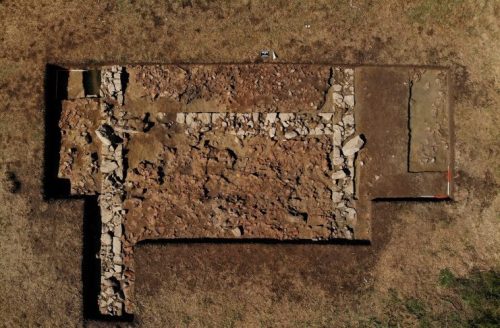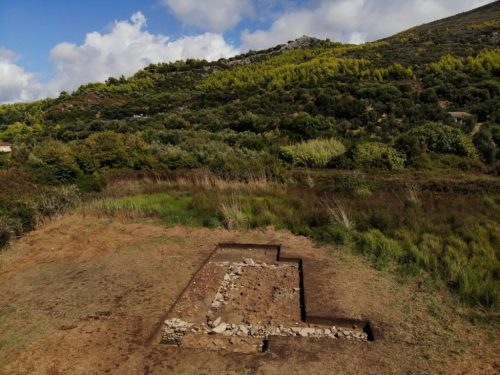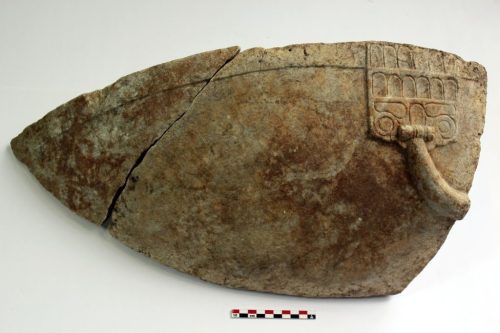
In the realm of historical and archaeological discovery, there are few things as captivating as the search for lost temples, ancient cities, and legendary landmarks. The tantalizing allure of these mysteries has led many to embark on quests to uncover the hidden treasures of our past.
One such quest recently bore fruit, as archaeologists have made a groundbreaking discovery – the fabled Temple to Poseidon, immortalized in the writings of the Greek historian Strabo. This discovery not only sheds light on the rich tapestry of ancient Greek history but also highlights the importance of meticulous research, perseverance, and the enduring relevance of historical texts.
Strabo’s Ancient Encyclopedia
To appreciate the significance of this discovery, we must first understand the context in which it was made. Strabo, a renowned Greek historian, geographer, and philosopher who lived around 64 BCE to 24 CE, authored a monumental work known as “Geography” or “Geographica.” This work,
consisting of 17 books, was essentially an ancient encyclopedia detailing the known world’s geography, history, and culture. Strabo’s meticulous accounts have been invaluable to scholars and historians, providing insights into the ancient world.

One of the many treasures contained within Strabo’s “Geographica” was the description of a magnificent temple dedicated to Poseidon, the god of the sea, located near the Greek city of Helike. This temple was said to be an architectural marvel, a place of grandeur and devotion. However, over the centuries, the temple’s existence faded into the annals of legend, obscured by the passage of time.
The Search for Helike
The journey to find the Temple to Poseidon began with the search for Helike itself. Helike was an ancient Greek city that famously disappeared into the depths of the Gulf of Corinth after a devastating earthquake in 373 BCE.
For centuries, it was considered lost, a ghostly reminder of the capricious power of the elements. However, in the 19th and 20th centuries, determined archaeologists and historians began piecing together clues from historical texts, including Strabo’s “Geographica,” to locate the sunken city.
The dedication and perseverance of these explorers led to the eventual discovery of Helike’s submerged ruins in the early 2000s. This achievement marked a significant milestone in archaeological research and was a testament to the enduring value of ancient texts in guiding modern scholars.
The Unveiling of Poseidon’s Temple
Having found the lost city of Helike, the search for the Temple to Poseidon intensified. Armed with Strabo’s detailed accounts and the newfound knowledge of Helike’s location, archaeologists meticulously excavated the site. Their efforts bore fruit when, deep beneath the layers of silt and sediment, the majestic Temple to Poseidon emerged from the shadows of antiquity.

The temple, with its Doric columns and intricate carvings, stood as a testament to the skill and craftsmanship of ancient Greek architects and artisans. Its discovery not only validated Strabo’s historical accounts but also provided a tangible link to the past.
The temple was a place of worship, a hub of cultural and religious significance, and a testament to the enduring legacy of Greek civilization.
The Importance of this Discovery
The discovery of the Temple to Poseidon serves as a reminder of the vital role that historical texts play in guiding archaeological research.
Strabo’s “Geographica” was not merely an ancient encyclopedia but a treasure trove of knowledge that bridged the gap between the past and the present. It provided the breadcrumbs that led modern explorers to uncover a lost city and its awe-inspiring temple.
Furthermore, this discovery rekindles our fascination with ancient Greek history and mythology. The Temple to Poseidon was more than just a building; it was a place where ancient Greeks paid homage to a god who controlled the seas, a deity of immense power and significance. This find allows us to walk in the footsteps of those who once worshipped there, providing a tangible connection to our cultural heritage.
Conclusion

The recent discovery of the Temple to Poseidon near the submerged city of Helike is a testament to the power of historical texts, the dedication of archaeologists, and the enduring allure of ancient mysteries.
Strabo’s meticulous accounts in his “Geographica” guided modern explorers to unveil this hidden gem of Greek history and mythology. This discovery not only enriches our understanding of the past but also inspires us to continue our quest for knowledge and exploration, reminding us that there are still countless treasures waiting to be unearthed beneath the sands of time.






